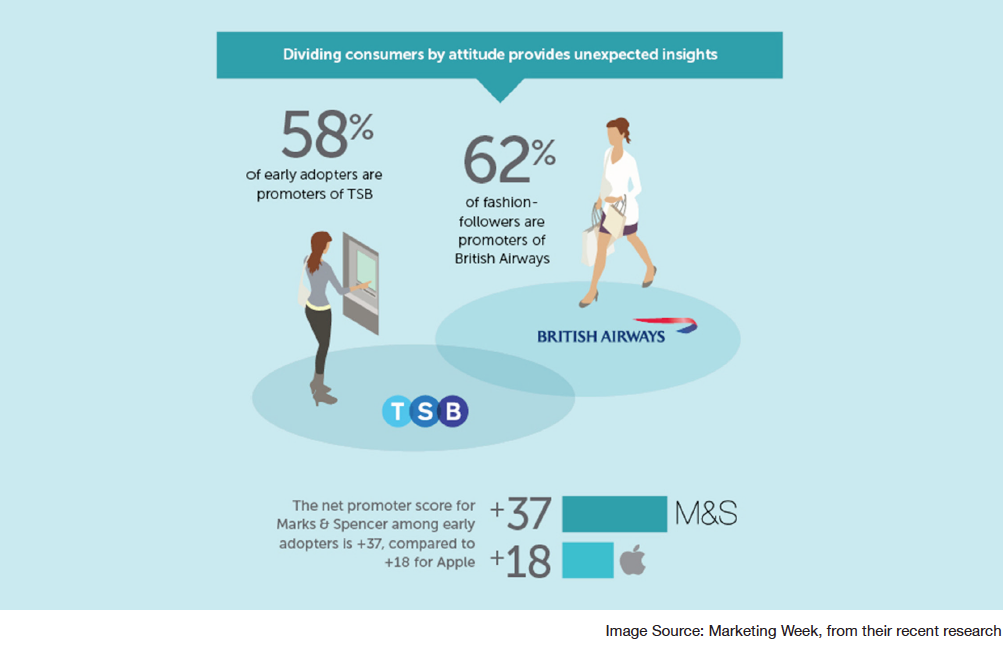How many times have you been in a meeting where someone describes their target consumer based on age, gender, or other vague demographics? To say that men aged between 18 – 35 years old buy from your brand is to say that you don’t have a clue about your customers. Seriously, what does this tell you about your audience?

We could be talking about an 18-year-old student who enjoys drinking every night of the week, watching X Factor, and eating Pot Noodles (not to stereotype) and a 35-year-old Audi driver with a young family and a mortgage … or, it could be the other way around! The point is that age and gender have nothing to do with what makes people have something in common. Instead, we should look at their attitudes.
At last, our industry is waking up to the idea that understanding how your customer thinks about life delivers far better results than measuring demographics that are too broad to act on. Either way, brands still need the skills and experience to decipher these insights and turn them into decisions that lead to commercial growth.
There have been some revealing studies published recently on the difference between demographics and attitudes, showing the benefits of marketing based on the latter. For instance, Marketing Week recently came out with new research showing that segmenting based on attitude is often more likely to unite consumers than markers such as age or social grade. What a surprise!

They questioned 1,500 UK consumers and found that having kids is actually one of the biggest indicators of brand preferences. That’s right, being a parent makes you far more likely to shop at M&S – but supposedly less likely to shop at Waitrose.
And it’s not just to do with income. People usually associate Primark with less well off consumers, but the truth is that Primark customers are a diverse group who are more united in attitude than demographic. Apply this same thinking to eco-friendly brands and it suddenly makes us question the assumption that green products should be marketed to those in higher income bands – who says? It’s not just the middle class that cares about the environment. Again, it’s about attitude.
So why do we still market products to either men or women? Why not both? I’ve started a new rule for myself and for the future of my kid’s generation to learn from our past mistakes and actively ignore markers such as age or gender – to treat people as gender neutral. I’d rather take attitudes over age, because at least attitudes can be segregated. I don’t want to assume expertise in relation to gender.
When the world sees collaboration and transparency as powerful tools for building engaging brands that are created for consumers based on attitudes rather than demographics, then I’ll be happy. The future is for individuals to become expert in who they are and what they do, regardless of gender – and since everyone’s classification of gender is different, who’s the judge of greatness anyway?


